Knot Throwing
The goal in knot throwing is to, with a seemingly simple jerk of one hand, tie a knot. The speed and ease with which an experienced knot thrower can tie knots is truly amazing.
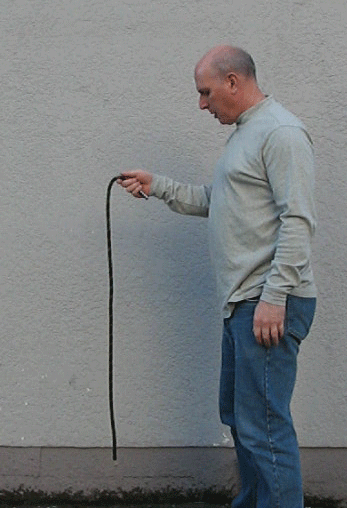
There are four quick steps to tying a one-handed overhand knot:
- the upward tug to start the move,
- the downward pull to create a half-loop in the rope,
- the forward jab to close the loop, and
- the small, sideways strike of the tail to send the tail through the loop.
Hold one end of the rope comfortably in your hand. Let the rope dangle so everyone can see that there is no knot.
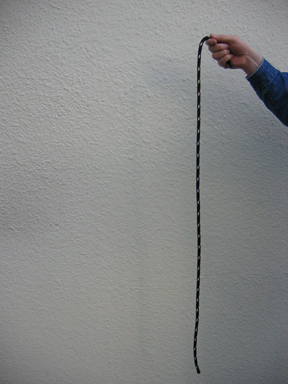
Pull your hand straight up with a short, quick tug. You want to pull the rope up in as vertical a line as possible. Make sure you don't inadvertently swing the bottom of the rope up in an arc.
Pull your hand down sharply while most of the rope is still traveling upward. The portion of the rope near your hand will be descending, while the majority of the rope will still be rising. This will create a half-loop in the top portion of the rope.
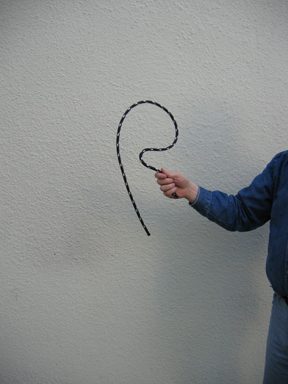
Jab your hand forward past the center of the length of rope to turn the half-loop into a full loop.
Hit a section of rope below the loop with your hand. The idea is to strike the rope so the tail jumps up and through the loop, creating the knot. A good contact spot on the rope to aim for is just below the halfway point. You want to have enough tail below the striking point so the rope can finish tying the knot. A suggestion is to extend your index and middle fingers out from your hand and using these two fingers to strike the rope.
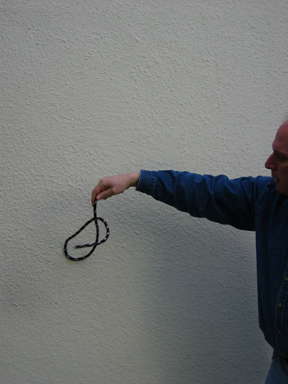
Hold your hand still after the tail falls through the loop to let the rope straighten out and reveal an overhand knot.
Untie the knot and try again.
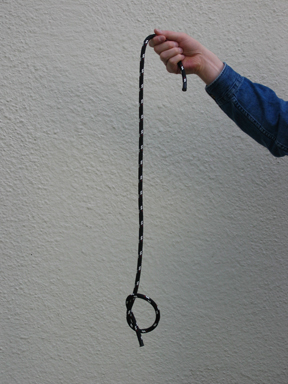
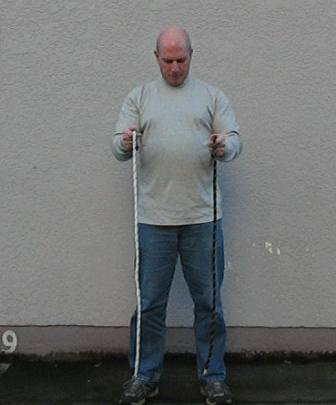
Now, that you can tie a knot with one hand, why not try with both?

- Home
- About
- Ball Juggling
- Cigar Boxes
- Club Juggling
- Club Swinging
- Comedy Writing
- Cup Stacking
- Devil Sticks
- Diabolo
- Diabolo Postcards
- Dice Stacking
- Hat Manipulation
- Lasso
- Miscellanous Juggling
- Parachute Games
- Poi Swinging
- Ring Juggling
- Shaker Cups
- Skill Games
- Staff
- Tennis Balls and Can
- New Games Foundation
- Ordering and Shipping
- Contact Information
- Peeps (photos of birds and stuff)
- Personal Thoughts
- Workshops
- Links
- Questions? Comments? Feedback?